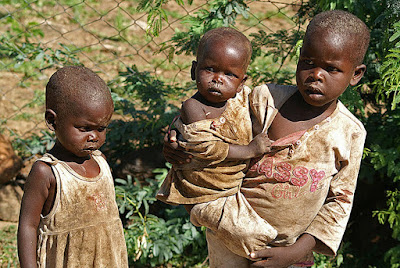Violence Against Children
The
welfare of the child has often time's aroused global interest and commitment
because children are the future leaders of any society. It is in view of the
position of children as future leaders that the National Assembly of the
Federal Republic of Nigeria signed into law the Child's Right Act 2003, Act No.
26, to provide and protect the rights of Nigerian children from abuse
(F.R.N.2003) However, Child abuse has continued unabated in Nigeria in spite of
the efforts of government and non-governmental organizations to protect
children from abuse.
Around the world
children are being abused, beaten, violated and exploited. For NGOs working to
protect children from such violence, urgent action is needed. The Working Group
on Children and Violence aims to promote action that will prompt violence
prevention strategies and protect children who are vulnerable. In particular
the Working Group focuses on the framework provided by the CRC and works
towards the implementation of this instrument as a legal obligation for
governments and as a core protection tool for children.
Child abuse is defined as mistreatment of the child, which may involve
physical, sexual or psychological harm, (American Academy of Pediatrics, 2000).
According to Khatric (2000), child abuse is an act or failure to act on the
part of a parent, or caregiver which leads to physical or emotional harm,
sexual abuse or exploitation, or any act of failure to act which involves
imminent risk of serious harm. FGN/UNICEF (2001) defines child-abuse as a
situation in which a child is suffering from serious physical injury inflicted
by an adult which is not accidental; is suffering harm by reason of neglect,
malnutrition and sexual abuse, and or goes without necessary basic facilities,
or is growing up under conditions which threaten her physical and emotional
survival. Fryer (1990) maintains that child abuse is a crime and cut across all
cultures, social classes and religion. Children are dependent on the adults for
care, love, and protection but many a times; some adults misuse their position
and authority on the child. An abused child is often burdened with a lot of
tasks and responsibilities beyond his or her age. The child is pressurized,
subjugated, enslaved, and over-punished for any little offence. The child is
also neglected and lacks the necessities of life. Child abuse and neglect has
become a pervasive phenomena which raises the concern of well-meaning
individuals, educators, government and non-governmental organizations.
Over the years issues about the girl-child have taken the front burner in many
countries of the world. The Phenomenal concern given to girl-child related
matters is informed by the discrimination, oppression, and abuse suffered by
the girl-child. According to Abok (2009: 119). "Girl –child abuse entails
all acts of commission or omission that hamper the physical, mental, social,
spiritual and moral development of the girl-child". In Nigeria the
girl-child has continued to suffer intense abuse despite the fact that Nigeria
has enacted the Child's Right Act. The prevalence of girl-child abuse could
have accrued from the negative attitude of parents towards the girl-child. Many
parents in Africa, and in Nigeria in particular give preferential treatment to
boys, especially in matters concerning education. Eze (2008) states that the
girl-child suffers abuse and neglect more than her male counterparts. The 1984
Universal Declaration of Human Rights maintains that every person has a right
to education, the girl child inclusive. However, Eze (2008), laments that this
declaration is yet to turn into any meaningful action in most parts of Nigeria.
Girl-child abuse, no doubt is limiting Nigerian girls from developing their
potentials. A large number of girl-children, due to abuse and neglect, are
being denied quality education, which is the only sure way they can
develop their potentials, become economically empowered and meaningfully
contributed to the development of the country. This paper therefore looks into
the facets of girl child abuse and their educational implications.




















